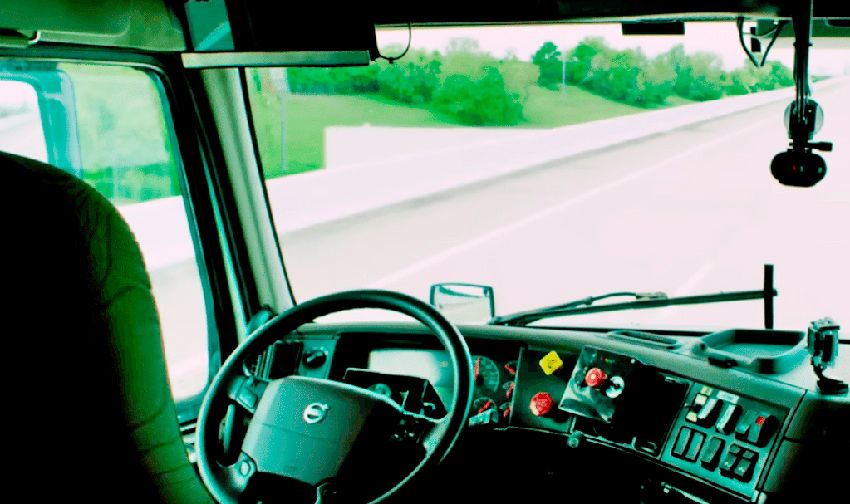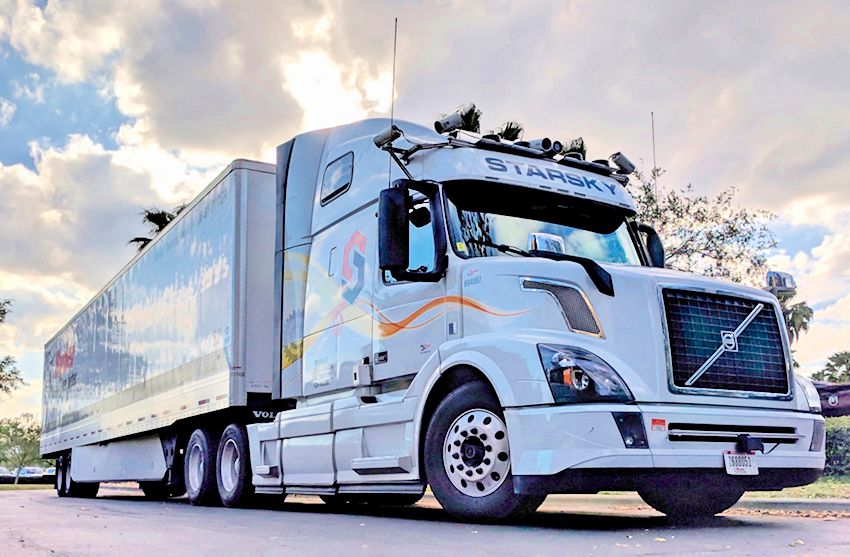American startup company has set a speed record for unmanned trucks

27.06.2019
Autonomous road train Starsky Robotics startups developed on the public road speed of 88 km/h

Standalone 18-wheel truck startup Starsky Robotics for the first time successfully drove on the highway for General use, passing, setting a speed record for unmanned trucks. Train without driver in the cab had passed the rest area, and went out on the road, switched lanes and headed for a cruising speed of 55 mph (88 km/h).
The video shows that while people in the cockpit was not, and a team of engineers remotely monitor the behavior of the truck and if necessary take over the management in difficult situations, like the gamer controls the movement of the virtual machine in the simulator races, but the truck was very real and was driving very fast – pace traffic flow.

This is not the first experiment of a startup, so in February, one of the trucks Starsky Robotics has overcome the test track at 11 km at a speed of 40 km/h. In may, Starsky announced a new speed record for an unmanned vehicle is allowed to drive on public roads – the truck developed 88 km/h on a closed stretch of road near Tampa.

A few months Starsky promises to increase the pace of testing has expanded its drone fleet. The head of the company Stefan Seltz-Axmacher believes that remote operators can track the movement of 10 to 30 trucks through the channel: "In Starsky, we use a qualitatively different approach to automation and security. We are not building fully Autonomous trucks are designed to operate without any human intervention or relying solely on computers in all decisions during the trip. We know that today people are better able to cope with many nuances of driving than even the most advanced computer system and use the remote pilots that help our trucks to overcome a difficult situation".
If this technology will be developed, the speed of the road transport industry can grow to $676 billion in the next few years, because by this time the shortage of drivers in road transportation will reach 100 million people.
By the way, recently, Volvo Trucks has launched a similar project with unmanned network electrotractor Vera, which is connected to an integrated solution for the transport of goods between the logistics center and the port terminal in Gothenburg, Sweden.
PS it is Possible that this project in our time will become the solution to the shortage of driver's shots, but it is doubtful that the network operator remotely like the air traffic controller accompanying two or even three dozen cars, will adequately replace a real driver, at least one of them. It is likely a situation when one of the trucks at quite a respectable speed 90 km/h will need assistance in a complex traffic situation and the operator switches to it, and at the same time help to "Murphy's law" will require different (and sometimes more than one) the car – and then what? So there are between "two stools to sit down" by staging a serious accident. So this here, "polybutelene" can be ineffective in terms of ensuring safety of transportation..
|
|
|








